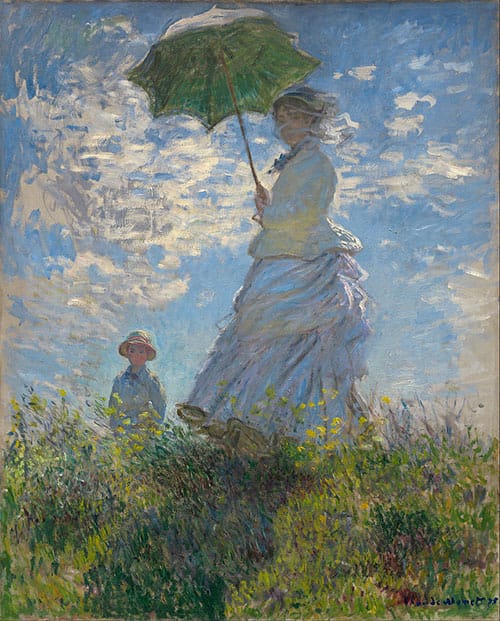Woman With A Parasol was painted by French impressionist artist Claude Monet in 1875. The painting portrays Monet’s wife Camille Monet and their son Jean Monet in the period from 1871 to 1877 while they were living in Argenteuil, capturing a moment on a stroll on a windy summer’s day. The painting now resides in the National Art Gallery in Washington, DC.
Woman with a Parasol is representative of Monet and impressionism in many ways, and Argenteuil provided the ideal setting. Monet was looking at the world and depicting it in way that had not been done before. The contrast of a town full of industry and still a vacation spot appealed to these artists. In the painting, the viewer is in the spot that Monet would have been. So, when we see the figures looking towards us, they are in fact looking towards Monet. By showing them like this, it is as if we interrupted them on their stroll, and they have taken a momentary pause to glance over. This spontaneity in a portrait was a new convention used by Monet. Monet was a master of capturing a moment, a glimpse, in time.
The painting was one of 18 works by Monet exhibited at the second Impressionist exhibition in April 1876, at the gallery of Paul Durand-Ruel. Ten years later, Monet returned to a similar subject, painting a pair of scenes featuring his second wife’s daughter Suzanne Monet in 1886 with a parasol in a meadow at Giverny.




